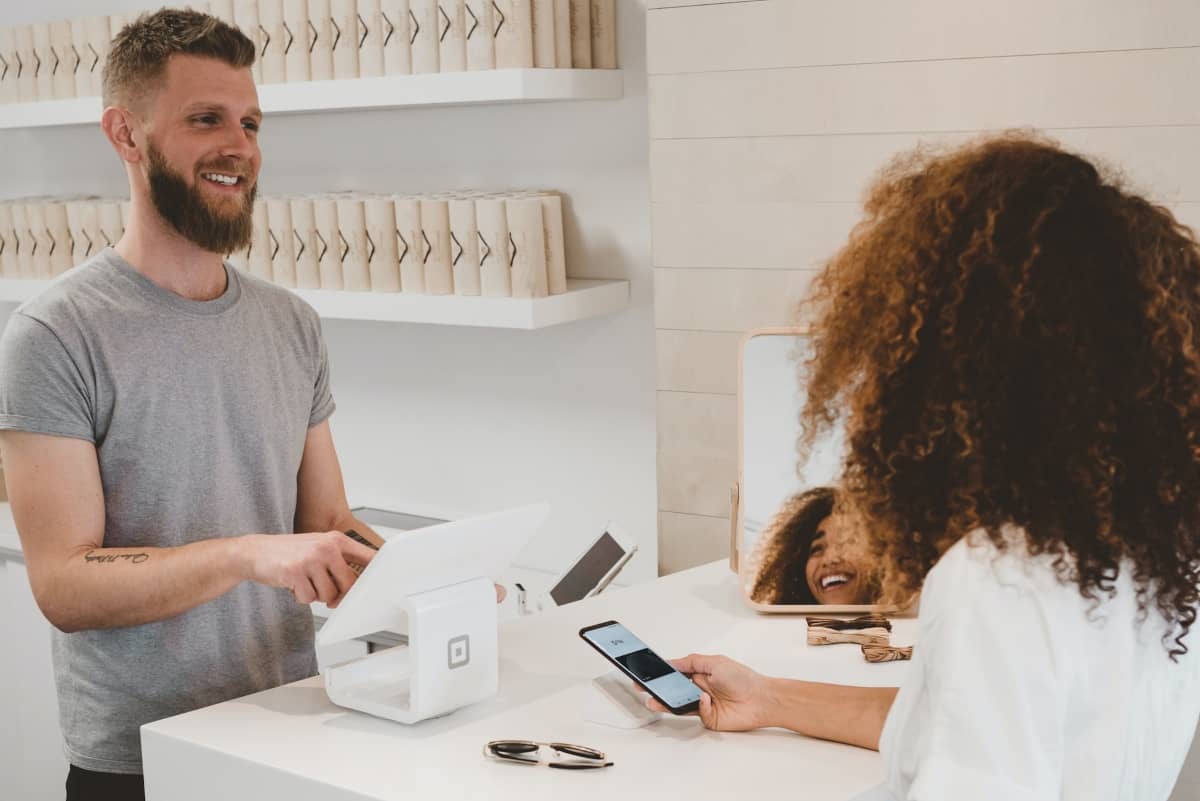How to Build an eCommerce $ale$ Funnel in 2025
For savvy marketers, eCommerce marketing can be very lucrative, especially if you use an eCommerce sales funnel.
And, yeah, we know.
eCommerce funnels are intimidating — at first.

But we've got your back.
Building a sales funnel is far more accessible and less time-consuming than you might think.
You'll learn everything you need to know to build this powerful eCommerce marketing tool and attract more customers to your business so you can add more revenue to your bottom line.
What Is an eCommerce Sales Funnel?
An eCommerce sales funnel represents the customer journey from the time potential customers discover your business to the time they make a purchase.
Also known as a marketing funnel or a conversion funnel, the eCommerce funnel outlines the steps customers take to move through the buying process.
The top of the conversion funnel is where the customer learns of your product or service.
The bottom of the conversion funnel is where they make their purchase.
You'll use marketing techniques like social media posts and email marketing campaigns to help move your customers through the sales funnel.
The sales funnel isn't just about the customer, though.
A conversion funnel helps you understand how customers interact with your products and services.
And it helps you make better eCommerce marketing decisions.
Building an eCommerce conversion funnel can help you:
- Improve sales by increasing your leads and nurturing them through the buying process.
- Boost conversion rates by improving the user experience for website visitors.
- Build trust with customers by educating them on your business and how it will ease their pain.
- Increase revenue by upselling and cross-selling existing customers.
- Optimize your digital marketing strategy to reduce cost per acquisition.
The 4 Stages of an eCommerce Sales Funnel
1. Awareness stage.
The first stage of the eCommerce sales funnel is the awareness stage.

The people in the awareness stage are at the top of the eCommerce funnel and are looking for solutions to their problems and pain points.
Before this stage, they didn’t know about your company or your offers.
Your goal at this stage of the eCommerce conversion funnel is to capture attention with your marketing efforts.
You want to show people your products or services provide the relief they’re looking for.
There are a few tactics for reaching a new audience.
You’ll want to experiment to see which marketing methods work best for your eCommerce business.
Ideally, you’ll use a mix to achieve maximum results.
Social media ads.
Social media ads are a marketing tool to build brand awareness and reach new people.
You can target specific demographic segments and interests to bring potential customers into your eCommerce conversion funnel.
While Facebook ads are the most popular ads, you could also try Pinterest or Google ads.
Where you should allocate your marketing spend will depend on the kind of eCommerce business you have and where your target audience spends their time.
Eye-catching, high-quality images will be critical to grabbing attention wherever you run your social media ads.
Today's consumers are much more sophisticated and used to tuning out ads.
Striking visuals will stop the scroll.
Another tip for standing out is a clear value proposition.
What makes your business the obvious choice? How are you uniquely suited to help the reader?
These are points you’ll need to address in your marketing.
SEO-optimized content.
Organic search engine optimized (SEO) content marketing is another option for the eCommerce funnel.
SEO content marketing helps your website rank higher in search results, giving you more eyes on your content.
SEO marketing starts with keyword research to identify what potential visitors are searching for.
Imagine you offer accounting services for home-based businesses. You could target keywords like how to find a small business accountant or how to start a business from home.
Next, you create content around these keywords. This content should be helpful and informative for your readers.
Going back to our example of being an accountant for small business owners, you might write a blog post about tax deductions for small eCommerce businesses.
You could include links to other blog posts that readers might find useful, like home office organization or the best bookkeeping software for service providers.
Social media outreach.
Social media outreach works particularly well in the B2B marketing space.
If you have a business in mind that you'd love to work with and offer a service or product that would benefit them, social media is a great way to get on their radar.
How does social media outreach work?
You follow your target client on social media platforms where they’re active and engage with them.
Share their content and tag them in your post. Leave thoughtful comments on their posts. Respond in DMs to their stories.
The goal is to open up a dialogue so they become familiar with your name and get to know you a little.
It moves them from a cold lead to a warm one.
When you reach out with a marketing proposition, they’re more likely to give you some time out of their day.
2. Consideration stage.
The consideration stage is the next stop on your sales funnel.
The people in the consideration stage know they have a problem or pain point and are actively looking for solutions.
This is the stage where customers start researching different solutions. They compare multiple products and services to find the best one to meet their needs.
Your goal in the consideration stage is to move your audience further along your sales funnel by showing them your products or services are the right choices for them.
Website optimization.
Your website has a significant impact on the customer’s experience and your conversion funnel.
If they have a good experience, they are much more likely to buy. But what makes a good user experience?
First, optimize your product pages. Product listings are prime real estate in a sales funnel.
Your descriptions should be engaging and persuasive. And stand out from the competition by highlighting what makes your products or services unique.
Use plenty of high-quality images or videos that show the product clearly.
Include sizing details and product descriptions so customers know exactly what they're getting.
Also include information about shipping and return policies, so customers have confidence in their buying decision.
Make it easy for customers to buy from you. Use prominent call-to-action buttons with personalized text instead of the standard by now option.
Additionally, consider integrating the shortest route with Google Maps into your delivery process information, as efficient delivery is a crucial factor in customer satisfaction and can significantly impact their buying decision.
And be sure your site is optimized for mobile marketing. Mobile devices are responsible for 54% of website traffic.
Social proof.
Social proof goes a long way toward moving customers along in your eCommerce sales funnel.
They want reassurance that your digital products and services are legitimate and worth buying, so things like customer reviews and testimonials can reassure them.
Social proof also helps build trust with your audience. It paves the way for them to take the next step in the sales funnel and buy from you.
You can gather social proof on Facebook, Linkedin, and Google. You can also run email surveys to ask current customers for testimonials.
Videos are a powerful form of social proof. Two-thirds of people surveyed say they're more likely to purchase after seeing video proof of how a product or service has helped someone like them.
Consider creating a video testimonial with one of your satisfied customers.

Use your social proof in multiple ways. Include testimonials on the social media ads you run.
Use them on your product pages. Add testimonials to your email marketing campaigns. Repost satisfied customer messages on your social media feeds.
Retargeting with social media.
Retargeting ads are a powerful tool for moving eCommerce buyers through your sales funnel.
They allow you to target those who’ve already visited your website or interacted with your brand in some way.
For example, suppose a potential customer visits your sales page but doesn't make a purchase. Your ad could offer a discount or other incentive to encourage them to return and make a purchase.
You can also use these ads to nurture leads by directing viewers to content and resources that help them make an informed buying decision.
Retargeting ads are an effective way for eCommerce businesses to reach out to potential customers and increase their chances of making a sale.
They work well because the viewers are a warm audience.
By targeting customers who have already shown an interest in the product or service, you create personalized advertising experiences.
3. Decision stage.
The decision stage of the sales funnel is a critical step in the customer journey.

This is where potential customers decide if they’ll purchase your product or service.
Understanding this stage of the eCommerce conversion funnel and how to optimize it for a maximum conversion rate is essential.
At this stage, customers have been exposed to your brand and have shown interest in what you have to offer.
By providing customers with the information and resources you offered in the previous stages, you've laid the path for them to make a purchase.
It's important to remember that eCommerce customers want to feel confident in their purchase decisions before committing their hard-earned money.
You can increase conversions and maximize revenue by offering incentives and streamlining your checkout process.
Incentives.
Incentives play an important role in the decision stage of the conversion funnel. They can help sway customers in the right direction and encourage them to commit to a purchase.
For example, you might offer a discount code for a certain percentage off their purchase.
You could also offer free shipping for orders over a specific dollar amount or a free gift with purchase.
These incentives give customers an extra push to make that final decision and complete their purchase. Pop-ups are a great way to deliver these incentives.
Another way to offer your incentives to potential customers is with behavior-based emails like the abandoned cart email sequence.
When customers visit your online store and add purchases to the shopping cart but don't finish the checkout process, you can draw them back with an email marketing reminder.
Sweeten the deal by offering a bonus if they check out that same day.
Streamlined checkout process.
A streamlined checkout process helps prospective customers complete their purchases with minimal effort.
This reduces cart abandonment and increases conversions. It also creates a positive customer experience, leading to repeat purchases and customer loyalty.
Ensure your customers have the necessary information before they begin the checkout process.
This includes product descriptions, pricing, shipping costs, payment options, and other relevant details to help them make an informed decision.
Provide clear instructions on how to complete the checkout process. Brightly colored buttons help draw attention to the right places.
Make the checkout process easier by offering multiple payment options such as credit cards, Paypal, Apple Pay, etc.
This gives eCommerce customers more flexibility when making their purchases.
4. Retention stage.
The retention stage of the sales funnel is a crucial step in any eCommerce business.

It’s focused on keeping existing customers engaged with your brand and products and turning them into repeat customers.
This increases customer loyalty and creates a steady revenue stream for your eCommerce store.
Another reason to focus on customer retention is that it costs much less to retain an existing customer than to gain a new one.
Studies have shown that it’s five times more expensive to acquire a prospective customer than to keep an existing one.
The more customers you retain, the more money you save on marketing and advertising costs.
Your conversion funnel retention strategies should be tailored to each customer depending on their needs and interests.
For example, you could offer discounts or loyalty programs for repeat customers or send personalized emails with product recommendations based on someone’s past purchases.
Personalized messages.
Personalized messages are a great way to engage customers and create lasting relationships.
They show customers that you value them and their business.
They also help build trust and loyalty, which can lead to repeat purchases and referrals.
Personalized messages can thank customers for their purchase, offer discounts or promotions, and provide helpful information about products or services.
An example of a personalized message you might send a customer could be:
Thank you for your purchase! We hope you enjoy your new product. As a token of our appreciation, we'd like to offer you 10% off your next purchase. Please use the code ‘thankyou10’ at checkout.
You could also use an email series that helps your customer use their new purchase to its greatest advantage.
If you sell email marketing software, you could send customers an onboarding sequence that teaches them the best practices for sending emails.
Loyalty programs.
With a well-designed loyalty program, you can create a loyal customer base that will help drive revenue and growth for your eCommerce business.

At the core of a loyalty program is the idea that customers should be rewarded for their loyalty.
This could be in the form of discounts, free shipping codes, exclusive access to products or services, or even points that can be redeemed for rewards.
By offering these incentives, customers are more likely to return to your online store and make additional purchases.
For example, an eCommerce business might offer a loyalty program that gives customers points for every purchase. Customers can then redeem these points for discounts on future purchases or special offers.
This encourages customers to keep coming back and spending money with your business.
Another loyalty program to consider is one based on referrals. You could offer customers a discount based on the number of new customers they send your way.
Cross-sells & upsells.
Cross-sells and upsells are important marketing tactics for eCommerce businesses because they increase the value of each customer's purchase.
Cross-sells are products related to the item a customer is already buying, while upsells are higher-priced items that offer more features or benefits than the original item.
For example, you might cross-sell a related product when someone is purchasing a laptop. You could suggest they also buy a laptop sleeve or a wireless mouse.
This increases the value of their purchase, and they’re likely to need these additional items anyway.
An upsell might offer an upgraded version of the laptop with additional features, such as more RAM or storage space, for an additional cost.
This encourages customers to spend more money on their purchases and increases the overall value of their order.
Are You Ready To Build Your eCommerce Sales Funnel?
Building an eCommerce sales funnel is a great way to increase customer acquisition and revenue.
It requires careful planning, testing, and funnel optimization, but it’s worth the effort.
With our tips, you can create a powerful conversion funnel that attracts customers and drives sales.
So, start building your own eCommerce sales funnel today and reap the rewards of increased customer engagement and higher profits.
Jennifer Ayling is a prize-winning SEO website copywriter. She specializes in helping business owners get their thoughts and ideas out of their heads and onto their websites.